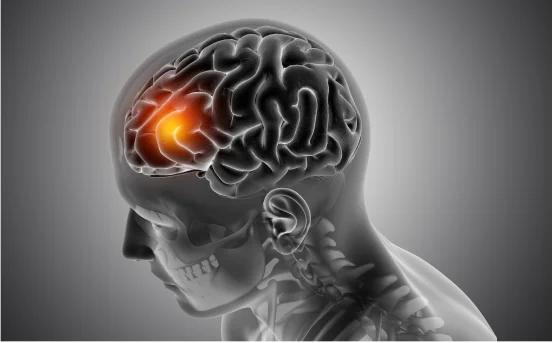Types of thalamotomy surgery is a specialized neurosurgical procedure used to treat certain movement disorders and chronic pain conditions by targeting the thalamus, a small but critical structure deep within the brain. The thalamus acts as a relay center, transmitting sensory and motor signals to the cerebral cortex. In cases of neurological dysfunction, particularly involving tremors and involuntary movements, disrupting specific parts of the thalamus can bring significant relief. Various types of thalamotomy surgery are available to address these issues.
Understanding the various types of thalamotomy surgery is crucial for patients considering this option.
Thalamotomy is most commonly used to treat movement disorders, including Parkinson’s disease, essential tremor, and dystonia, especially in cases where symptoms such as tremors, rigidity, or involuntary muscle contractions become debilitating. The procedure involves the precise destruction or inactivation of a small, targeted area within the thalamus, usually the ventral intermediate nucleus (VIM), to alleviate these symptoms.
Different types of thalamotomy surgery are tailored to individual conditions and symptoms.
What Is Thalamotomy?
Thalamotomy involves the surgical destruction or inactivation of a specific portion of the thalamus, usually the ventral intermediate nucleus (VIM). This area plays a vital role in motor control and is often responsible for tremors in conditions like :-
Learning about the types of thalamotomy surgery can help patients make informed decisions.
-
Parkinson’s disease
-
Essential tremor
-
Dystonia
-
Multiple sclerosis-related tremors
By targeting and disrupting this nucleus, thalamotomy can reduce or eliminate symptoms that do not respond to medications.
Why Is Thalamotomy Performed?
Thalamotomy is typically recommended when :-
-
Medications fail to adequately control tremors or cause intolerable side effects.
-
The patient has severe tremors that interfere with daily functioning.
-
There’s a need for focal intervention, particularly when symptoms are one-sided.
Types of Thalamotomy Surgery
There are several types of thalamotomy based on the technology used to create the lesion in the brain. Each has its advantages and limitations. Below are the most common types :-
Each of the types of thalamotomy surgery has unique benefits and risks associated with it.
Radiofrequency (RF) Thalamotomy
Overview :-
RF thalamotomy is the most traditional form. A neurosurgeon inserts a thin probe into the brain and uses radiofrequency energy to heat and destroy a small part of the thalamus.
The radiofrequency type of thalamotomy surgery is one of the oldest forms of treatment.
Procedure :-
-
Conducted under local anesthesia with the patient awake.
-
MRI or CT imaging guides the insertion of the electrode.
-
The surgeon tests for symptom improvement before lesioning.
-
Once the correct location is identified, radiofrequency waves heat the tissue to create the lesion.
Advantages :-
-
High precision.
-
Immediate feedback during surgery.
-
Cost-effective compared to other modern methods.
Disadvantages :-
-
Invasive; involves drilling a small hole in the skull.
-
Longer recovery time.
-
Small risk of infection or bleeding.
Gamma Knife Thalamotomy
Overview :-
Gamma Knife thalamotomy is a non-invasive, radio surgical technique that uses highly focused beams of gamma radiation to destroy targeted tissue in the thalamus.
Gamma Knife thalamotomy surgery is a modern alternative to traditional methods.
Procedure :-
-
Patient wears a stereotactic head frame.
-
Imaging scans map the exact area to be treated.
-
Hundreds of small gamma beams converge on the target, delivering a precise radiation dose.
Advantages :-
-
Completely non-invasive.
-
No incision or hospital stay.
-
Lower risk of infection or bleeding.
Disadvantages :-
-
Effects are not immediate; symptom relief may take weeks to months.
-
Not suitable for all patients, especially those with metal implants.
-
Limited ability to adjust once the treatment is administered.
MRI-Guided Focused Ultrasound (MRgFUS) Thalamotomy
MRgFUS is one of the latest types of thalamotomy surgery techniques.
Overview :-
A revolutionary, incision-free procedure, MRgFUS uses focused ultrasound waves to heat and destroy thalamic tissue. It is performed inside an MRI machine for real-time guidance and temperature monitoring.
Procedure :-
-
Patient lies inside an MRI scanner with their head in a helmet-like device.
-
Focused ultrasound beams pass through the skull and converge on the target area.
-
Continuous MRI imaging ensures accuracy and safety during the procedure.
Advantages :-
-
No incision, no radiation.
-
Real-time monitoring for precise results.
-
Minimal recovery time – patients often return home the same day.
-
Immediate or rapid symptom relief.
Disadvantages :-
-
Only approved for certain conditions (e.g., essential tremor, Parkinsonian tremor).
-
Not ideal for patients with skull abnormalities or those unable to undergo MRI.
-
Currently available in select centers worldwide.
Laser Interstitial Thermal Therapy (LITT)
Laser interstitial thermal therapy (LITT) represents a minimally invasive approach among the types of thalamotomy surgery.
Overview :-
Though not as widely used for thalamotomy as the other methods, LITT is a minimally invasive procedure that uses laser energy to thermally ablate targeted brain tissue.
Procedure :-
-
A small laser probe is inserted into the brain under MRI guidance.
-
The laser delivers controlled thermal energy to ablate the thalamic tissue.
-
MRI thermometry ensures precision and safety.
Advantages :-
-
Minimally invasive with a small incision.
-
Real-time temperature feedback.
-
Short hospital stay and recovery period.
Disadvantages :-
-
Still being explored for broader clinical use in thalamotomy.
-
Requires specialized equipment and training.
-
Higher cost compared to RF thalamotomy.
Risks and Complications of Thalamotomy
Understanding the risks associated with the types of thalamotomy surgery can prepare candidates for treatment.
While thalamotomy is generally safe, especially with modern techniques, risks may include :-
-
Weakness or numbness
-
Speech or balance problems
-
Cognitive changes
-
Infection (in invasive techniques)
-
Hemorrhage or swelling
Proper patient selection and experienced surgical teams reduce these risks significantly.
Who Is a Candidate for Thalamotomy?
Thalamotomy candidates should be familiar with the various types of thalamotomy surgery.
Thalamotomy may be considered if you :-
-
Have tremors resistant to medication.
-
Experience one-sided tremors severely affecting function.
-
Are in good overall health and can undergo surgery or radiosurgery.
-
Do not prefer or are not eligible for deep brain stimulation (DBS).
Thalamotomy vs Deep Brain Stimulation (DBS)
Comparing thalamotomy with DBS highlights differences in the types of thalamotomy surgery.
While both procedures target similar brain areas, DBS involves implanting a device that sends electrical pulses to modulate brain activity. DBS is adjustable and reversible but requires a more complex surgery and follow-up programming.
Thalamotomy offers a permanent solution without implanted hardware, but is not reversible and is typically only done on one side of the brain to avoid side effects.
Recovery and Outlook
Recovery outcomes may vary depending on the types of thalamotomy surgery performed.
-
Most patients experience significant improvement in tremors or pain.
-
Recovery depends on the surgical method used.
-
In non-invasive options like MRgFUS, patients can resume activities within a few days.
-
Physical or occupational therapy may help enhance results.
Conclusion
Thalamotomy surgery remains a highly effective treatment option for select patients with disabling tremors and chronic neurological conditions. With advances like MR-guided focused ultrasound and Gamma Knife radiosurgery, patients today have safer, less invasive options than ever before.
Overall, the types of thalamotomy surgery provide innovative solutions for many patients.






















